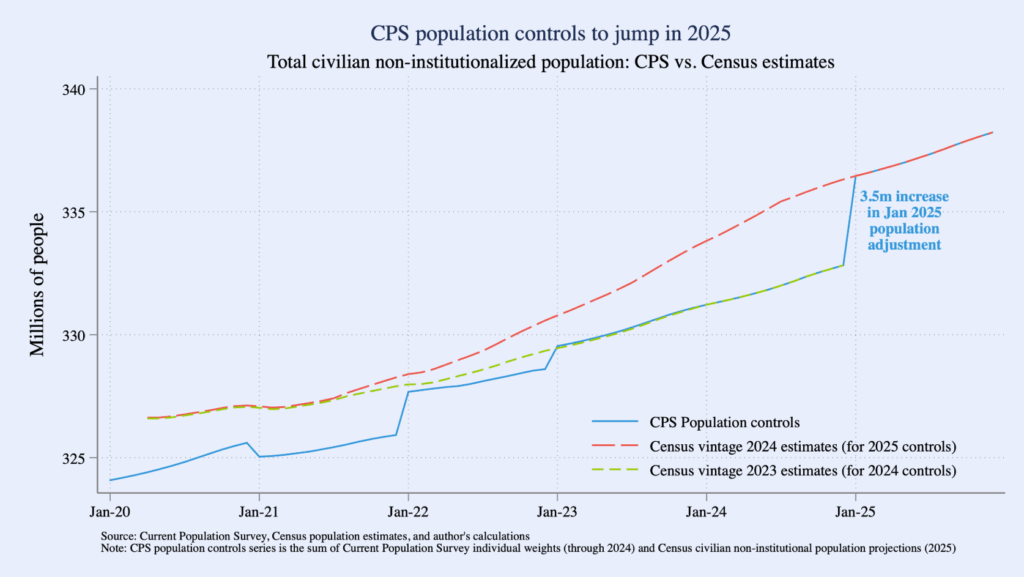By Kari Williams & Sarah Flood
The signature activity of IPUMS is data harmonization, or making variables interoperable across time, to facilitate pooling of multiple months or years of data, as well as comparative and trend analyses. It’s easy to get carried away in the magic of not needing to perform routine data cleaning and having documentation organized at the variable level, and perhaps miss some bigger picture considerations. The Current Population Survey (CPS) annual population controls adjustment is an excellent example.
Each January, the Census Bureau revises the CPS weights to incorporate new population controls, based on the Census Bureau’s updated population estimates. However, the Census Bureau doesn’t re-release previous weights for the CPS based on the new population controls. If you look at trendlines of weighted count estimates using CPS monthly data, you might notice a discontinuity between each December and January – these are the annual population control adjustments at work. In January 2025, the shift is particularly abrupt; this is because the 2024 vintage population estimates (i.e., the population controls for the 2025 CPS) reflect an improvement in the Census Bureau’s methodology for measuring net international migration.

Figure from Jed Kolko’s Population adjustments will cause the next jobs report to be misinterpreted and misconstrued.
In a February blog post, Jed Kolko warned that the dramatically higher levels (or counts) in the CPS in January 2025 compared to December 2024 would be susceptible to misinterpretation. Understanding the difference is important – particularly if you’re looking at changes in the absolute size of the labor force (or other dimensions of the CPS). The change is less obvious for measures other than counts, like the labor-force participation rate, unemployment rate, and prime-age employment ratio.
If you’re analyzing changes in levels across the 2024/2025 period, check out Kolko’s experimental release of historically comparable CPS microdata weights. This page describes three different methods for revising the microdata weights to adjust earlier months and years of data to reflect the latest vintage of the population estimates. The final population estimates for a given year aren’t typically available until the following June, so the different methods describe how to adjust the weights for comparability using the best available data at earlier time points in the year. Kolko shares the adjustment factors for method two, the best available method as of spring 2025, as well as sample code for merging them onto your IPUMS CPS file.
We love the CPS. We love things that make public use data even more useful to the public. We love solutions that eliminate redundant tasks that every individual researcher must repeat. Needless to say, we are pretty excited about this resource (and grateful to Jed Kolko for making it available), and we hope you are too! A little birdie told us that Jed would love to hear your feedback or suggestions on the historically comparable weights (feedback for IPUMS is always welcome at ipums@umn.edu).
